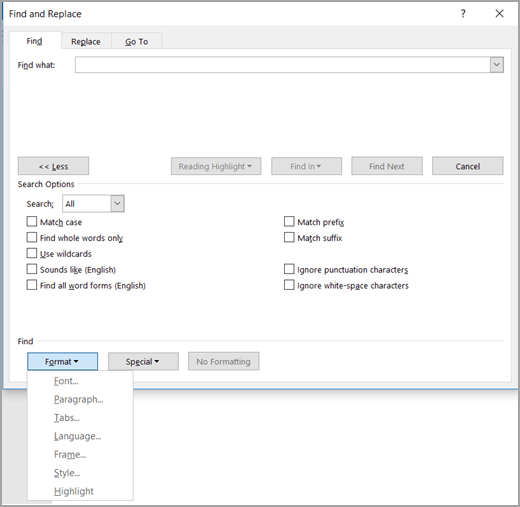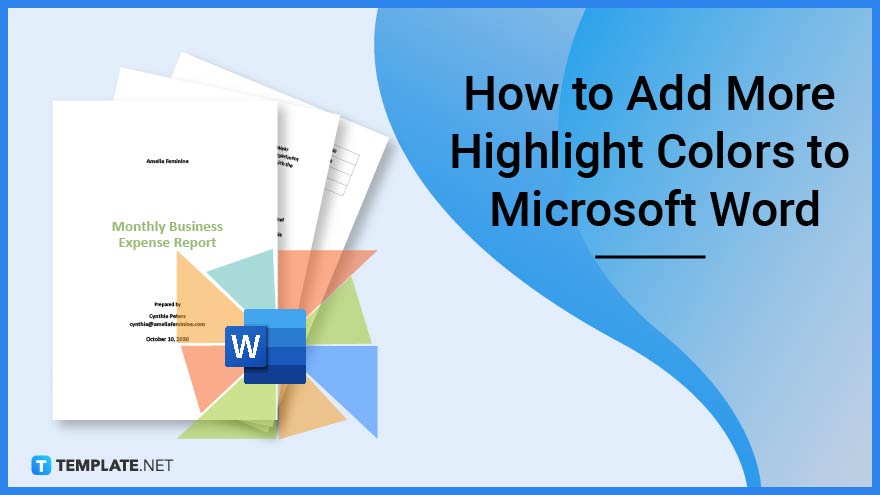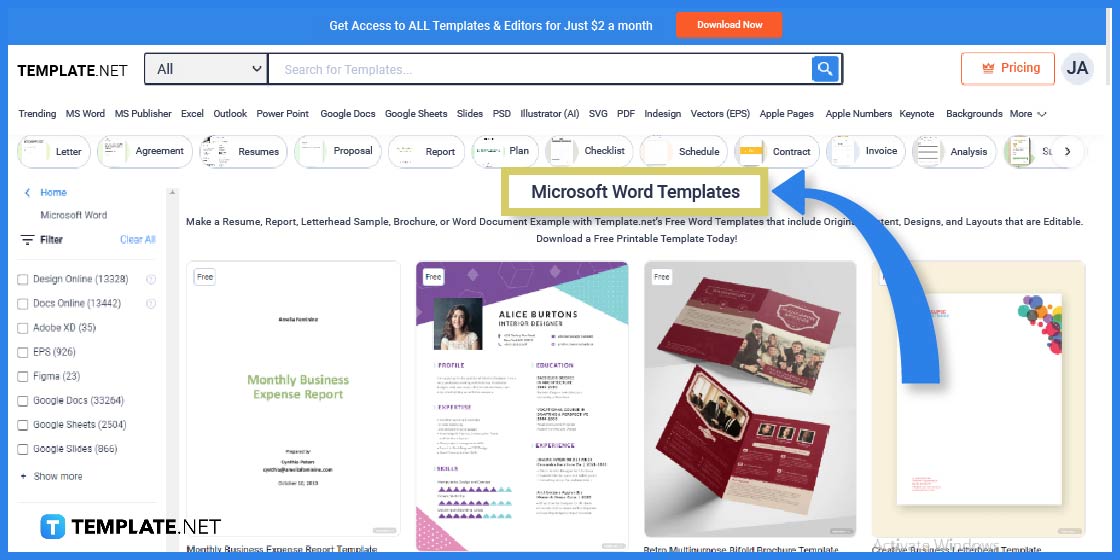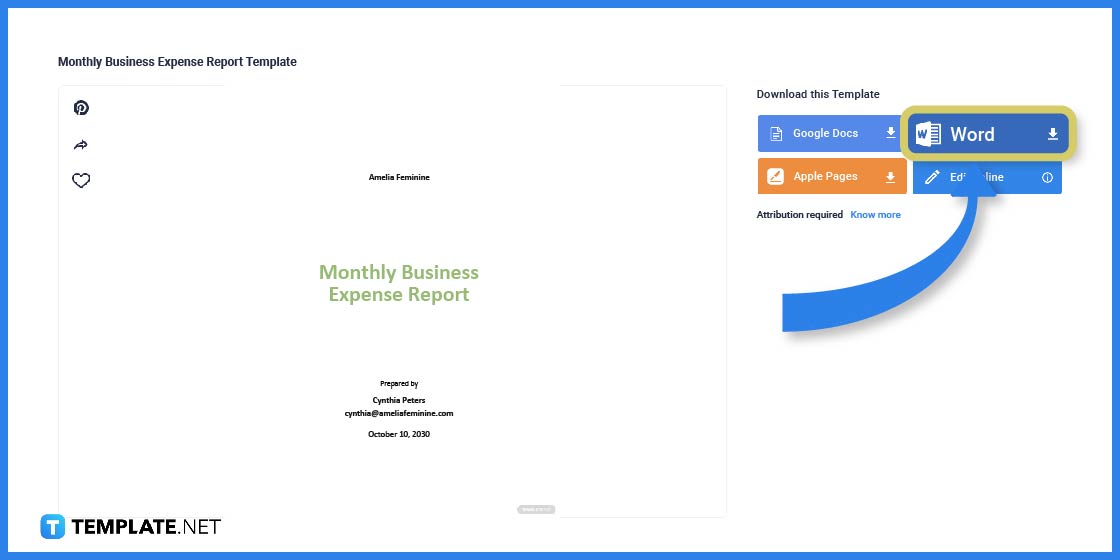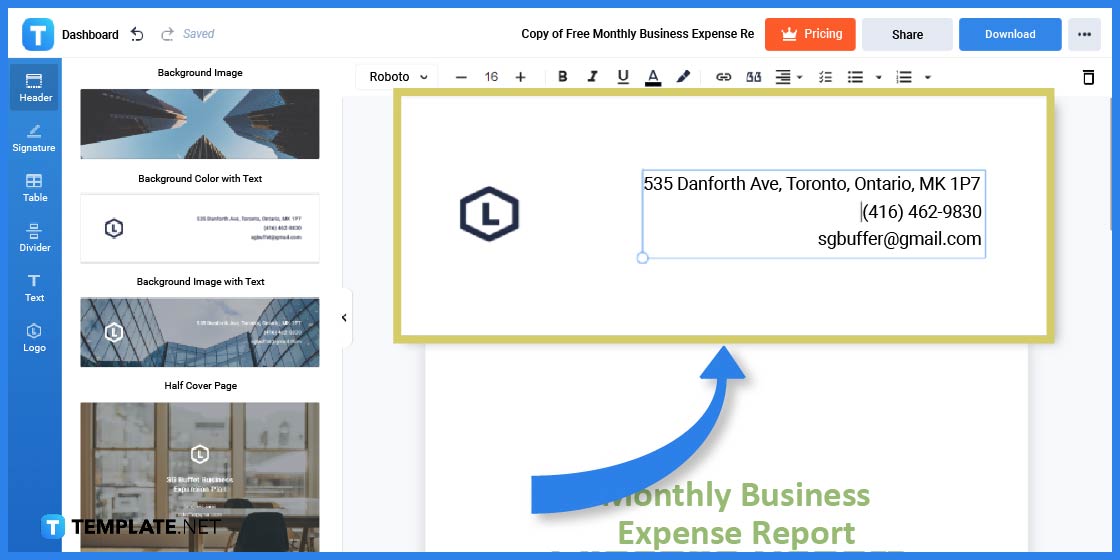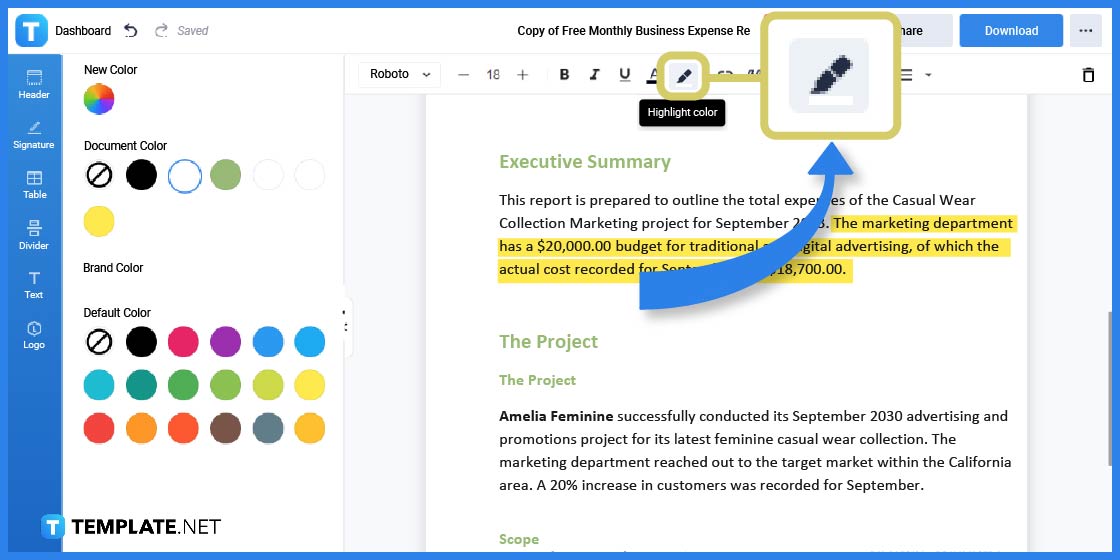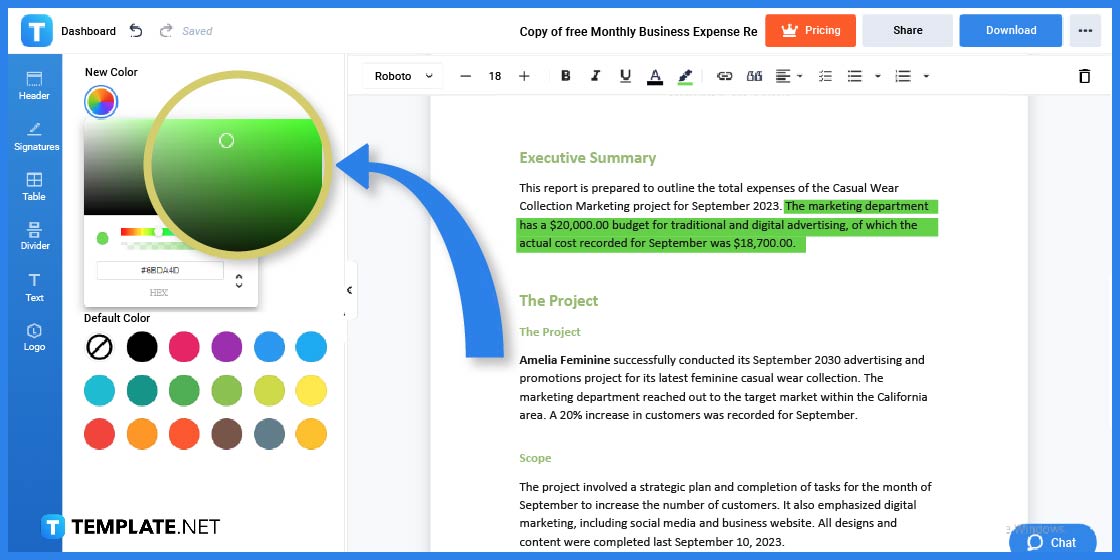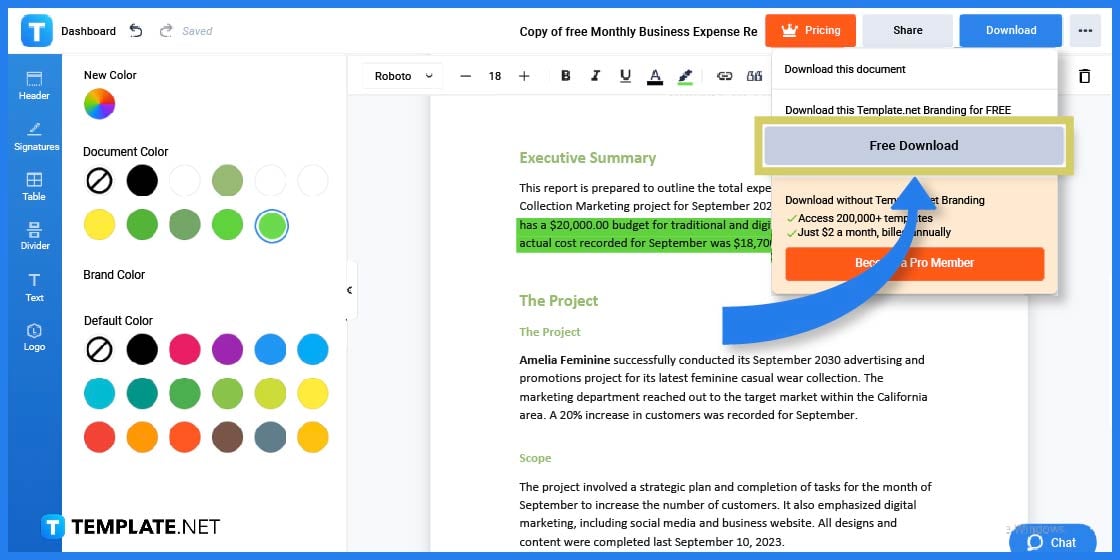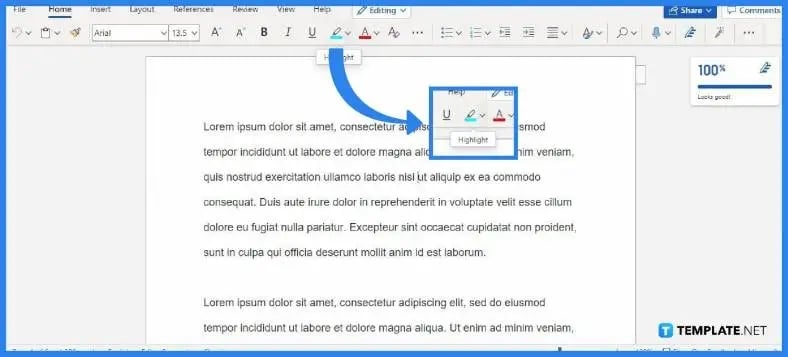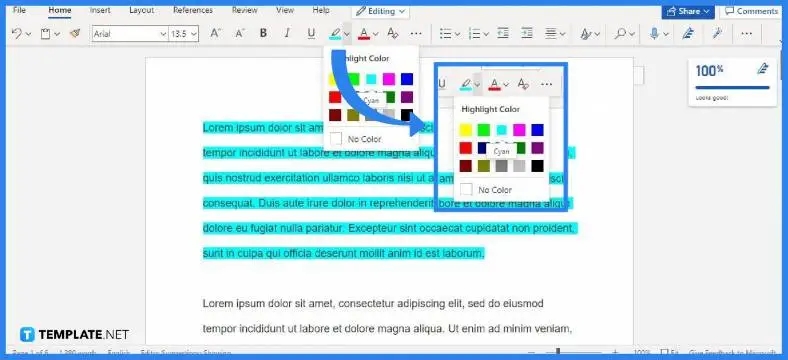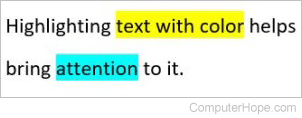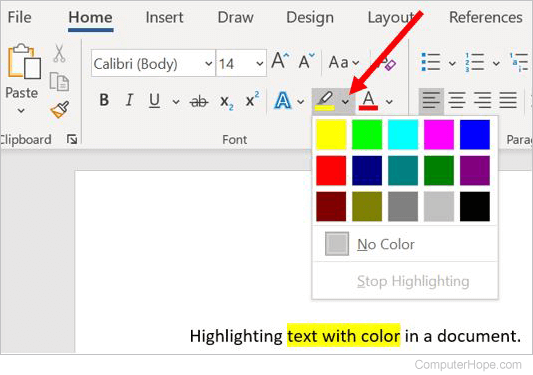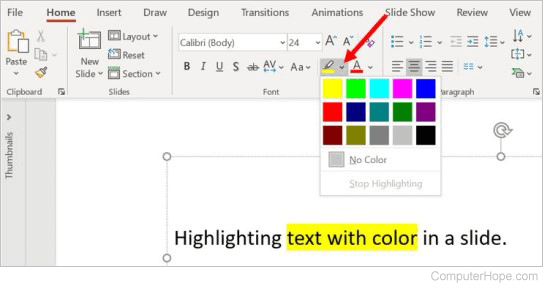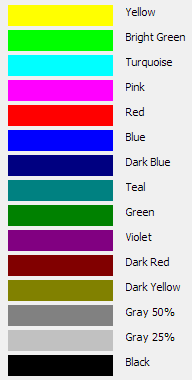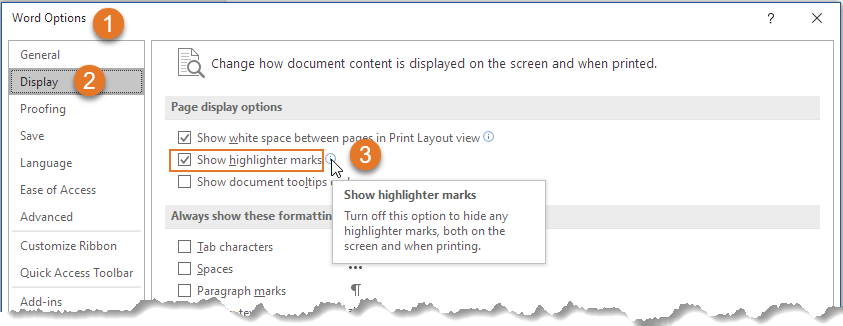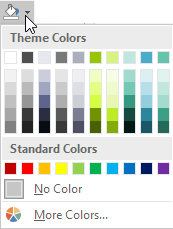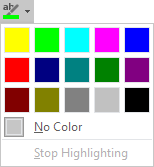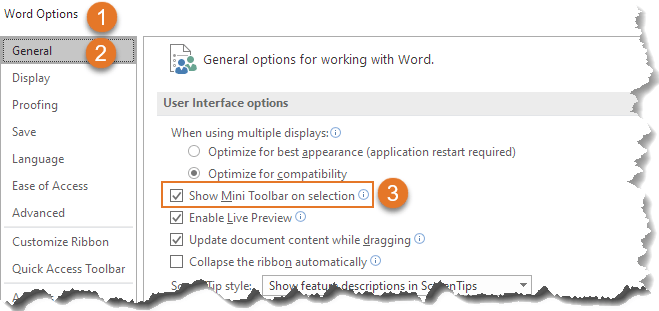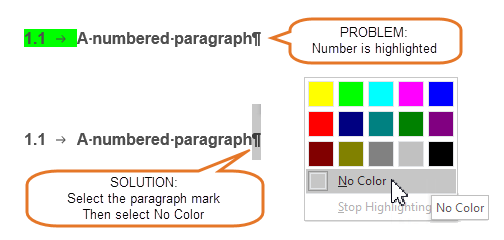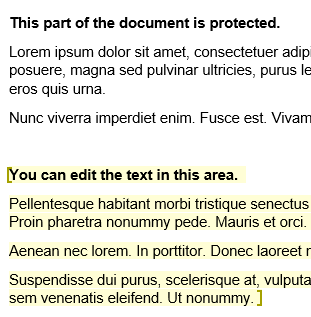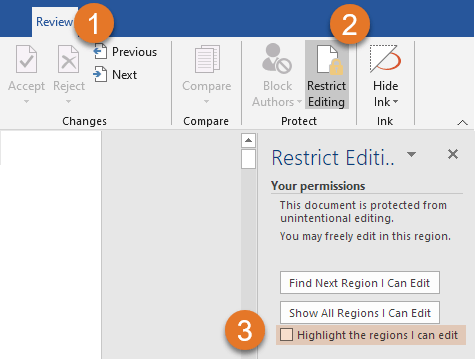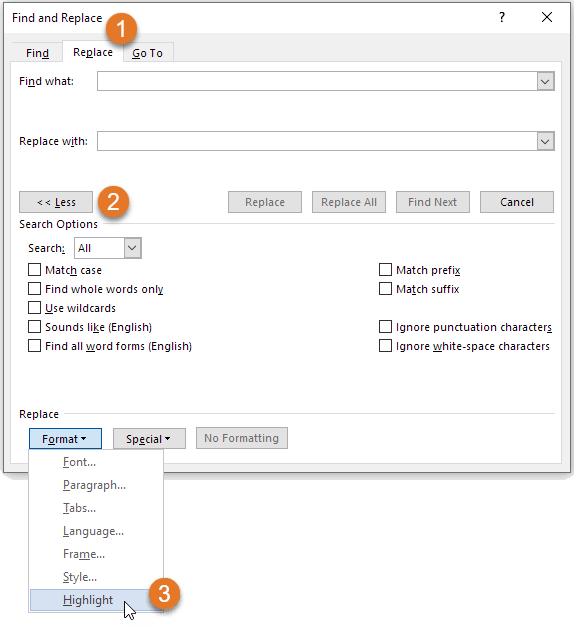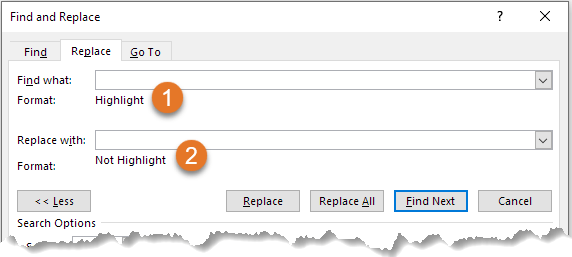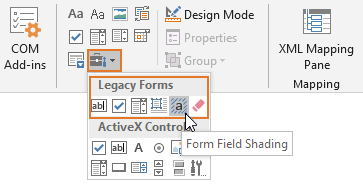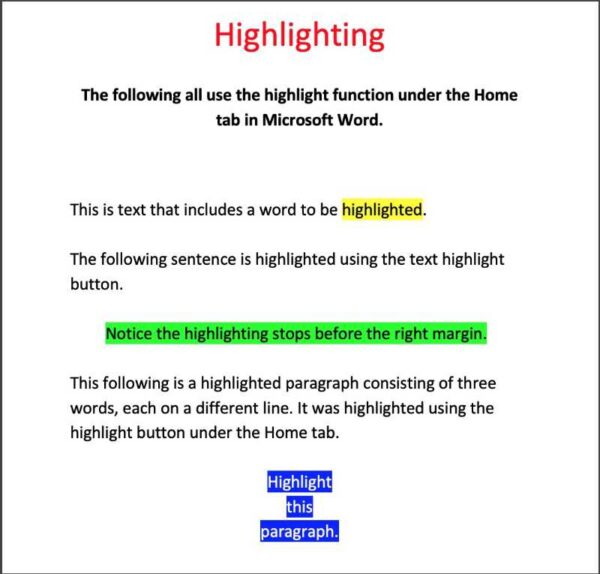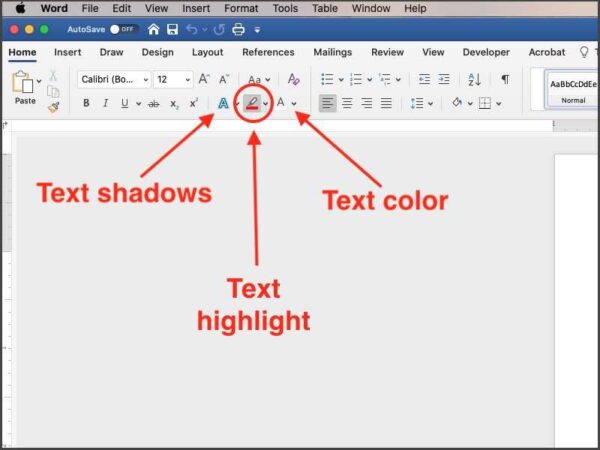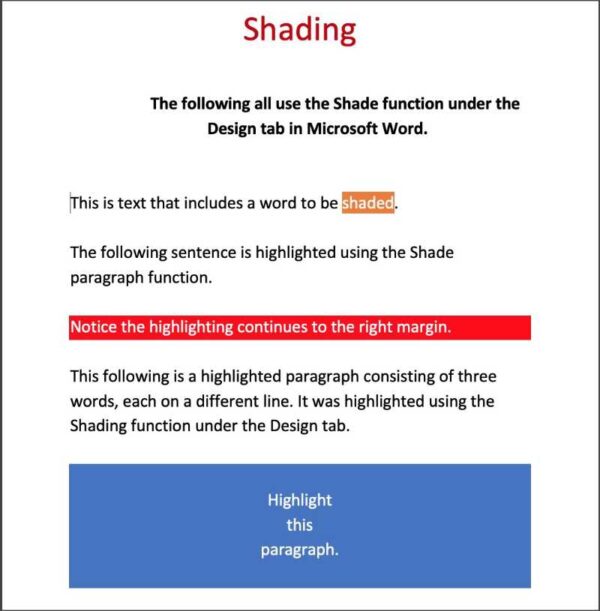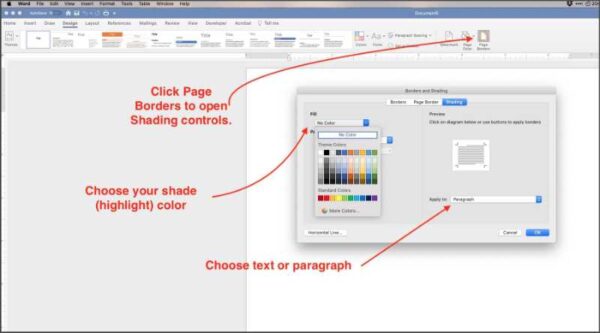Written by Allen Wyatt (last updated October 21, 2021)
This tip applies to Word 97, 2000, 2002, and 2003
Word provides a highlighter tool that allows you to…well, «highlight» text, much as you would do with a highlighter pen on a printed document. The default color for highlighting is yellow, but you can change the color if you click the down-arrow to the right of the Highlight tool on the Formatting toolbar. Word allows you to pick any of fifteen different colors.
The colors used for highlighting cannot be changed beyond what is offered in the fifteen colors. (The colors appear to be hard-wired into Word.) You can, however, highlight text in a different way, if you prefer: by using shading. Follow these steps:
- Select the text you want to highlight.
- Choose Borders and Shading from the Format menu. Word displays the Borders and Shading dialog box.
- Make sure the Shading tab is displayed. (See Figure 1.)
- From the colors displayed, select the one you want to use. (If you’d like to choose from more colors, click the More Colors button.)
- Click OK.
Figure 1. The Shading tab of the Borders and Shading dialog box.
Word then applies the selected color to the selected text, and it looks exactly like what you apply using the Highlight tool. If you find a color you like to use a lot, you can create a macro that applies the shading to the selected text. The following macro applies pale yellow shading to the selected text.
Sub HighlightPaleYellow()
With Selection.Font
With .Shading
.Texture = wdTextureNone
.ForegroundPatternColor = wdColorAutomatic
.BackgroundPatternColor = wdColorLightYellow
End With
End With
End Sub
With the macro in place, you can assign it to a shortcut key or to a toolbar button so you can apply your own «highlighting» whenever you want. Or, if you prefer, you can bypass macros altogether and simply create a character style that applies the desired shading to selected text.
There is only one downside that I can find to using shading to highlight text, and that has to do with Find and Replace. One of the formatting attributes that you can search for is if the text is highlighted, but you cannot search for shading applied to text. If this is a big concern for you, then I’d suggest defining styles for your shading, since you can always search for specific styles.
If you would like to know how to use the macros described on this page (or on any other page on the WordTips sites), I’ve prepared a special page that includes helpful information. Click here to open that special page in a new browser tab.
WordTips is your source for cost-effective Microsoft Word training.
(Microsoft Word is the most popular word processing software in the world.)
This tip (105) applies to Microsoft Word 97, 2000, 2002, and 2003.
Author Bio
With more than 50 non-fiction books and numerous magazine articles to his credit, Allen Wyatt is an internationally recognized author. He is president of Sharon Parq Associates, a computer and publishing services company. Learn more about Allen…
MORE FROM ALLEN
Single-Character Fractions
Some fractions Word automatically converts to single characters, some it doesn’t. Here’s why that happens and what you …
Discover More
Determining Differences Between Dates
Macros are often used to process the data in a worksheet. If that data includes dates that need to be processed, you’ll …
Discover More
Requiring Input
If you distribute a workbook that is used by others for data entry, you may want a way to make sure they fill in certain …
Discover More
Expanding Colors Available for Highlighting
- Select the text you want to highlight.
- Choose Borders and Shading from the Format menu. Word displays the Borders and Shading dialog box.
- Make sure the Shading tab is displayed. (See Figure 1.)
- From the colors displayed, select the one you want to use.
- Click OK.
Contents
- 1 How do I change the highlight color in Word?
- 2 How do you add a custom color in Word?
- 3 How do I get more highlight colors in Outlook?
- 4 How do I change the highlight color?
- 5 How do I change the highlight color in Windows 10?
- 6 How do I change the highlight color in Word 2016?
- 7 How do I create a Microsoft theme color?
- 8 How do you add a hex color in Word?
- 9 How do I create a custom theme color in Word for Mac?
- 10 How do I highlight text in color?
- 11 Why is my Word document highlighted yellow?
- 12 How do you shade in Microsoft Word?
- 13 How do I change the opacity of highlights in Word?
- 14 How do I change the highlight color in Word for Mac?
- 15 How do I get more highlight colors in PowerPoint?
- 16 Can you put color over highlights?
- 17 What is the default highlight color?
- 18 How do you highlight specific words in Word?
- 19 How do I get more highlight colors in onenote?
- 20 What is text highlight color in MS Word?
How do I change the highlight color in Word?
To Replace the Highlight;
- First choose the new Text Highlight Colour that you want to change to.
- Open the Find and Replace dialog (Ctrl H) and click the More button.
- Click in the Find What box.
- Click the Format button (If you can’t see it, click on the More button)
- Select Highlight.
- Click inside the Replace With box.
How do you add a custom color in Word?
Create Custom Color Sets
- Click the Design tab.
- Click the Colors button.
- Select Customize Colors.
- Click a color’s button.
- Select More Colors.
- Specify a color.
- Click OK.
- When you’ve finished setting colors, give the color set a name and click Save.
How do I get more highlight colors in Outlook?
Step 1: Click the File > Options. Step 2: In the Outlook Options dialog box, click the Search in the left bar. Step 3: Go to the Results section, click the Highlight color button and select a color in the drop down list.
How do I change the highlight color?
Right-click the highlight icon, then choose “Tool default properties“. Select the color palette, then choose a desired color.
How do I change the highlight color in Windows 10?
To Change Highlighted Text Color in Windows 10,
- Open the Registry Editor app.
- HKEY_CURRENT_USERControl PanelColors.
- See the string value HilightText.
- To find a suitable value, open Microsoft Paint and click on the Edit color button.
- In the color dialog, select the desired color using the provided controls.
How do I change the highlight color in Word 2016?
Select the text that you want to highlight. Go to Home and, select the arrow next to Text Highlight Color. Select the color that you want.
How do I create a Microsoft theme color?
Create a new theme color
On the Themes tab, under Theme Options, click Colors, and then click Create Theme Colors. Click a color that you want to change, and then click Change Color. Click a color that you want, and then click OK. Repeat steps 2 and 3 for each color that you want to change.
How do you add a hex color in Word?
Getting Started
- Open a file in one of the supported applications.
- For any property where you can define a color, click the appropriate button in the ribbon (such as the Font Color button) and click More Colors.
- In the Colors dialog box, click the Custom tab.
How do I create a custom theme color in Word for Mac?
Click Word > Preferences
- Click General.
- Under Personalize, click the Office theme dropdown. Choose between Colorful or Classic.
- As I mentioned earlier, the options are very minimal when it comes to changing the Color Theme. It’s basically White or Blue. Being that the new Mac Office Suite was just released.
How do I highlight text in color?
Highlight one piece of text
- Select the text that you want to highlight.
- On the Home tab, select the arrow next to Text Highlight Color .
- Choose a color. The text you selected will be highlighted in the color you chose.
Why is my Word document highlighted yellow?
Some of the documents you will find on the University Human Resources website contain yellow highlighting around areas we want to draw your attention to when you fill out the form.When Track Changes has been turned on in the document you will see your changes in RED until you accept the changes.
How do you shade in Microsoft Word?
Apply shading to words or paragraphs
- Select the word or paragraph that you want to apply shading to.
- On the Home tab, in the Paragraph group, click the arrow next to Shading.
- Under Theme Colors, click the color that you want to use to shade your selection.
How do I change the opacity of highlights in Word?
On the Picture Format ribbon, open the Format Picture pane and set the transparency to 45% (you can experiment with the percentage). Drag the picture to the desired location and size.
How do I change the highlight color in Word for Mac?
Go to > System Preferences – General to select a different Highlight color.
How do I get more highlight colors in PowerPoint?
To highlight text in PowerPoint 2019 or 365:
- Select the text that you want to highlight.
- Click the Home tab in the Ribbon.
- Click the arrow next to Text Highlight Color in the Font group. A color gallery appears.
- Select the desired highlight color from the gallery.
Can you put color over highlights?
Covering Highlights
To lighten your color, you need to get rid of that undercoat. When going darker after previously lightening, you’ll need to put the undercoat back so that your color looks even and vibrant. That’s what a colorfill does, and it is perfect for covering your highlights.
What is the default highlight color?
yellow
On the Home tab of the ribbon, the default color for the Text Highlight tool is yellow.
How do you highlight specific words in Word?
Highlighting Found Text
- Press Ctrl+H.
- Click the More button, if it is available.
- In the Find What box, enter the text you want to find and highlight.
- In the Replace With box, enter ^&.
- With the insertion point still in the Replace With box, click the Format button.
- Click the Highlight option.
How do I get more highlight colors in onenote?
Change the color of highlighting
You can change highlighted color anytime. On the Home tab, click the arrow next to the Text Highlight Color button and then click a highlighter color. Select the words you want to highlight, and then click the Text Highlight Color button.
What is text highlight color in MS Word?
A highlight is a visual indication that text or another object is selected with the mouse or keyboard.For example, when highlighting text, the selected text colors reverse, show as blue, have dots around the selection, or have bold lines around the selected text.
Highlight selected text
-
Select the text that you want to highlight.
-
Go to Home and, select the arrow next to Text Highlight Color.
-
Select the color that you want.
Note: Use a light highlight color if you plan to print the document by using a monochrome palette or dot-matrix printer.
Highlight multiple parts of a document
This method is best for highlighting multiple parts of a document because the Highlight tool stays on until you decide to turn it off.
-
Go to Home and select the arrow next to Text Highlight Color.
-
Select the color that you want.
The Text Highlight Color button displays the selected color, and the mouse pointer becomes a
when you point to the area of your document that contains text.
Note: Use a light highlight color if you plan to print the document by using a monochrome palette or dot-matrix printer.
-
Select the text or graphic that you want to highlight.
-
To stop highlighting, select the arrow next to Text Highlight Color
and select Stop Highlighting, or press Esc.
The mouse pointer becomes a
when you point to your document.
Remove highlighting from part or all of a document
-
Select the text that you want to remove highlighting from, or press Ctrl+A to select all of the text.
-
Go to Home and select the arrow next to Text Highlight Color.
-
Select No Color.
Quickly find highlighted text
-
If you are using Word 2016 or Word 2013, select Find > Advanced Find.
If you are using Word 2010, select Find.
The Find and Replace box appears.
-
Select Format > Highlight.
If you don’t see the Format button, select More.
-
Select Find Next.
Highlight selected text
-
Select the text that you want to highlight.
-
Go to Home and select the arrow next to Text Highlight Color.
-
Select the color that you want.
Note: Use a light highlight color if you plan to print the document by using a monochrome palette or printer.
Highlight multiple parts of a document
This method is best for highlighting multiple parts of a document because the Highlight tool stays on until you decide to turn it off.
-
Go to Home and select the arrow next to Text Highlight Color.
-
Select the color that you want.
The Text Highlight Color button displays the selected color, and the mouse pointer becomes a
when you point to the area of your document that contains text.
Note: Use a light-toned highlight color if you plan to print the document by using a monochrome palette or printer.
-
Select the text or graphic that you want to highlight.
-
To stop highlighting, select the arrow next to Text Highlight Color
and select Stop Highlighting, or press Esc.
The mouse pointer becomes a
when you point to your document.
Remove highlighting from part or all of a document
-
Select the text that you want to remove highlighting from, or press Ctrl+A to select all of the text in the document.
-
Go to Home and select the arrow next to Text Highlight Color.
-
Select No Color.
Quickly find highlighted text
-
Select Find > Advanced Find.
The Find and Replace box appears.
-
Select Format > Highlight.
If you don’t see the Format button, select More.
-
Select Find Next.
- Using the Text Highlight Color button
- Using the Context Menu
- Using the Find and Replace dialogue box
Method 1: Using the Text Highlight Color button
Step 1: Open your Word document.
Step 2: Select the text.
Now that your document is ready, select the text that you want the highlight color changed.
You can quickly select a text by double clicking on it.
Step 3. Access the Text Highlight Color drop-down button.
While the text is selected, click the drop-down button next to the Text Highlight Color button in the Home tab.
This will display the highlight colors available. Click the color that you prefer.
Method 2: Using the Context Menu
Step 1: Open up a Word document.
Step 2: Select the text.
Once your document is ready, go ahead and select the text that you want the highlight color changed.
Step 3: Access the Context Menu.
Right-click on the text and click the Text Highlight Color drop-down button.
Select the color that you prefer from the drop-down menu.
Method 3: Using the Find and Replace Dialogue Box
This is most suitable if you have multiple highlighted text across your document. Note that if you have different highlight colors in your document, this method can replace all of that with the same color.
You can also replace batches of highlighted recurring words with a different uniform color. To do this, you can skip to the “Changing Highlight Color of Recurring Text in Word” section.
With that introduction, let’s get to it.
Step 1: Open your Word document.
Step 2: Launch the Find and Replace dialogue box.
Go to the Home tab and click the Replace button.
This will launch the Find and Replace dialogue box in the middle of your window.
Step 3: Change the highlight color.
On the dialogue box, click inside the Find What field then click the More>> button to display more options.
After that, click the Format drop-down menu at the bottom left of the dialogue box and select Highlight.
You’ve done it successfully if you see the word ‘Highlight’ under the Find what field.
Now, click inside the Replace with field and repeat the same step.
Finally, click the Text Highlight Color drop-down menu while your cursor is still in the Replace with field. Then, select the color you prefer.
Click the Replace All button to replace all highlight colors at once. Click the Replace button to change highlight color one by one. Otherwise, click the Cancel button.
Remove Text Highlight Color in Word
If you want to remove a few text highlight color in your document, simply repeat either the first and second method.
However, you’ll have to select the No Color option instead.
To remove all text highlight color in a document, simply hit the CTRL + A keys in your document.
This will select all contents of your document. Now, click the Text Highlight Color drop-down menu and select the No Color option.
Changing the Highlight Color of Recurring Text in Word
To do so, you’ll simply have to repeat the steps in method 3 with one single revision.
On the Find and Replace dialogue box, type the recurring text in the Find what field.
Then, click inside the Replace with field and click the Text Highlight Color drop-down menu to change the color.
For this example, we’ll replace the highlight color of the text “amet”.
When that’s done, click the Replace All button to apply the changes. Or, click the Cancel button if you changed your mind.
If you want to learn how to use the Find and Replace functions better, check out the “How to Find and Replace Text in MS Word” article.
Conclusion
We hope you’ve found this article helpful!
Microsoft Office
Add more highlight colors to Microsoft Word so you won’t have to settle with the default shading color in marking particular comments, messages, and content in a Word document. From the lightest color, and blue hues, down to the darkest shade, any color palette is possible for your next highlighted text in MS Word by manipulating the highlight tool.
Table of Content
- Build a Word Template and Add More Highlight Colors to Microsoft Word – Step-by-Step Instructions
- Microsoft Word Templates & Examples
- One-Page Resume for Experienced Template in Word
- Retro Multipurpose Bifold Brochure Template in Word
- Creative Business Letterhead Template in Word
- Financial Proposal Template in Word
- Modern Work From Home Business Card Template in Word
- FAQs
Build a Word Template and Add More Highlight Colors to Microsoft Word – Step-by-Step Instructions
Word documents are naturally littered with texts as you write content about a legal contract, detailed permission letter, basic order form, simple cover letter, or any other document. And you could definitely use a premade template so you won’t have to write a Word doc from scratch and eventually access more highlight colors in the process.
Step 1: Look for a Microsoft Word Template (Option 1)
Start by visiting Template.net on your computer and check out the full landing page made for downloadable and printable Microsoft Word templates. There are various types of Word templates available and you can start by choosing a type of document that you really need for writing pronto.
Step 2: Search for a Microsoft Word Template (Option 2)
Here’s a helpful tip: use the search box on the top part of the website and type “Microsoft Word.” That way, you can access the landing page right away as well as see other quick recommendations when you click the “See All” button.
Step 3: Choose a Microsoft Word Template to Personalize
Pick a specific MS Word template you want to optimize by clicking it. You are directed to a page that gives you a closer look at the template and this is where you may click “Word” to download the template immediately; or, click “Edit online” so that you can still add changes to the template before the download.
Step 4: Customize Your Chosen Template Online
If you pressed “Edit online,” you are transported to the template’s main Editor tool where you can edit the template with features similar to that of Microsoft Word. Like in MS Word, the Editor tool lets you insert tables, change the font color, insert a logo, remove content from your worksheet, apply shading in a graphic design, and change highlight colors.
Step 5: Add Text for the Header
Jumpstart the editing process by writing the company block and basic information in a header. Click “Header” from the menu on the left side, choose a specific header design, click on a text box from the header, and write the new text in there shortly.
Step 6: Practice with the Built-In Highlight Button
Did you know that the Editor tool has a built-in highlight button? Click the icon that looks like a pencil, which is found on the right side of the capital letter A, and you’d see the default highlight colors on your screen shortly.
Step 7: Try Custom Highlights with the Color Palette
Click the color wheel chart on the upper side of the highlight’s default colors section to see the full color palette of possible highlight shades. You can pick any color from your screen, adjust the hues, remove highlight colors, and finally set your preferred custom highlight colors for practice with this feature.
Step 8: Download the Template
After customizing your chosen MS Word template, select “Download” on the top-right side. Then, press “Free Download” and you can open that Word template when you access it using your Windows PC, Mac OS, or any other platform.
Step 9: Open Microsoft Word and Write Random Text
In Microsoft Word, open any document that has text already or write a new text in a blank document. Then, left-click on the left side of the very first character of your text that you wish to highlight, hold your left-click, and drag the cursor toward the very end of the text that you want to be highlighted.
Step 10: Click the Highlight Icon
After the manual highlight you did earlier with your mouse, select the highlight tool text, which is the one with a pencil icon from the Home category. By clicking the highlight tool, the text you manually highlighted earlier will automatically be colored with the highlighter’s default color.
Step 11: Check Out Other Highlight Colors
You won’t be stuck with one default highlight color anymore when you press the drop-down button of the highlight tool. Click that button and you will be shown other highlight colors; just click on any color from there that you want to add to the highlighted text of your Word doc.
Microsoft Word Templates & Examples
Despite using Word 2010 or any other version of Microsoft Word, you won’t run out of MS Word documents to add more highlights or edit that easily by considering to look at other editable Word templates. Rest assured, you can alter the format, layout, label, design, and other features of a Word document such as these examples:
One-Page Resume for Experienced Template in Word
Improve your outlook on how to build a striking resume by showing how refined you are in resume-making. Consider a one-page resume for experienced template since you can showcase all the important details of your resume in just a single page, making it brief and straightforward.
Retro Multipurpose Bifold Brochure Template in Word
A retro multipurpose bifold brochure might be the kind of brochure design that you want to go for. This type of brochure has a vintage or retro vibe that might be the kind of appeal or brand you like to display for target audiences.
Creative Business Letterhead Template in Word
A creative business letterhead helps you build your business brand, meaning you have an official uniform document that covers your business name, logo, and company information. Use this creative type of letterhead so your business has a fun stationery design that can be remembered by whoever views the document.
Financial Proposal Template in Word
In Word, you might like to write a financial proposal and you’d be familiar with its format and layout by using a template. Don’t forget to highlight the important parts of the proposal such as the budget specifics to add emphasis.
Modern Work From Home Business Card Template in Word
Achieve a contemporary design for your next business card using a modern work from home business card template. You may highlight the work-from-home texts to grab attention easily that your business card is about a work-from-home business.
FAQs
Where else can I get more highlight colors in Word?
You can check out Microsoft Word’s Format menu and click “Borders and Shading;” the Shading tab specifically helps you get more highlight colors.
How can I get other highlight colors in OneNote?
If you are using another Microsoft Office program known as MS OneNote, simply click “Home,” select the arrow beside the text highlight color icon, and choose your preferred highlighter color.
How do I set a custom highlight color for Word using Mac?
Apple or Mac users may close the Word program for a while, access “System Preferences,” click “General,” look for the highlight color drop-down arrow, and pick a color shortly.
Updated: 03/06/2020 by
In a Microsoft Word document or a PowerPoint slide, highlighting text with color helps bring attention to that text. If you want to make sure readers pay attention to important content, highlight the text in yellow or another light color, to ensure they see it and can read it.
Select a link below for steps on how to highlight text in Word or PowerPoint.
Highlight text in Microsoft Word
To highlight text with color in a Word document, follow the steps below.
- Open the Microsoft Word document where you want to highlight text with color.
- Find the text to highlight. Using your mouse, select the text by pressing and holding the left mouse button, then drag the mouse to the left or right to select the text.
- In the Ribbon, on the Home tab, click the downward-pointing arrow next for the Text Highlight Color option.
- In the highlight color drop-down menu, select the preferred color for highlighting the text. The text is now highlighted with color.
Tip
If you want to change the highlighting color, repeat the steps above and select the new color in step 4.
Tip
If you want to remove the highlighting color, repeat the steps above and select the No Color option.
Highlight text in Microsoft PowerPoint
To highlight text with color in a PowerPoint slide, follow the steps below.
- Open the Microsoft PowerPoint slide deck where you want to highlight text with color.
- Find the text to highlight. Using your mouse, select the text by pressing and holding the left mouse button, then drag the mouse to the left or right to select the text.
- In the Ribbon, on the Home tab, click the downward-pointing arrow next for the Text Highlight Color option.
- In the highlight color drop-down menu, select the preferred color for highlighting the text. The text is now highlighted with color.
Tip
If you want to change the highlighting color, repeat the steps above and select the new color in step 4.
Tip
If you want to remove the highlighting color, repeat the steps above and select the No Color option.
How highlight in Word works
Learn how to highlight in Word, how to remove highlight / unhighlight in Word, find and replace highlight, etc.
In Word, you can highlight text on the screen much like you can highlight text on paper using a highlighter. In this article, you will find general information about how highlight in Word works. The basic information about highlight applies to both the built-in highlight functionality and the functionality of the DocTools HighlightManager add-in.
There is no difference between highlight added using the DocTools HighlightManager add-in and using the built-in highlight functionality in Word. The difference is that DocTools HighlightManager add-in makes the work much faster and more flexible.
15 available highlight colors
Word offers 15 highlight colors. For years, Word users have asked for more colors or the option to customize highlight colors, but so far with no luck.
Figure 1. Word highlight colors and their names.
Many of the 15 highlight colors available are too dark to use in most cases – for example, you can’t read black text on any of the darkest highlight colors.
Personally, I use yellow, bright green, turquoise and, in a few cases, red. The colors are rather glaring but I find they are the only ones that work.
Even if the Gray 25% is light enough to read the text, I don’t use it since it is impossible to distinguish it from selected text and from fields with field shading turned on.
In addition to the 15 highlight colors, there is a No Color which removes highlight.
Back to Table of Contents
How to show or hide highlight on screen and in print
- Highlight is neither font formatting nor paragraph formatting
- Highlight in Word documents is placed in its own layer that you can either show or hide
Even if it may look so, highlight in Word is not applied as font formatting or paragraph formatting like e.g. color shading. If you check the formatting of highlighted text, you will not see the highlight listed anywhere.
The display of highlight is managed via an option in Word:
- To show highlight both on the screen and in print, turn ON File > Options > Display > Show highlighter marks. See Figure 2 below.
- To hide highlight both on the screen and in print, turn OFF File > Options > Display > Show highlighter marks. See Figure 2 below.
Note that the Show highlighter marks setting is a global Word setting. It applies to all documents.
When you turn off Show highlighter marks, any highlight in documents will only be hidden, not removed. As soon as you turn on the setting, the highlight will appear again, if any. The highlight will also be visible if the document is opened on another computer with the setting turned on.
Figure 2. To show highlight on the screen and in print, turn on Show highlighter marks.
When you select a highlight color using the built-in functionality of Word, that color will be set as the default highlight color, i.e. the same color will be applied the next time you click the Text Highlight Color icon in the Home tab of the Ribbon or in the Mini Toolbar.
As opposed to the built-in functionality, the selection of a specific highlight color using the Apply Highlight command in the DocTools HighlightManager add-in will not affect your next highlight operation. The add-in lets you apply any highlight color with a click.
How to print without highlight
As explained above, you can turn highlight on and off, without removing the highlight from the document.
To print without highlight but keep the highlight in the document:
- Turn off display of highlight as explained above (see Figure 2).
- Print.
- Turn highlight on again, if you want.
In the DocTools HighlightManager add-in, you will find a command for quickly turning on and off the display of highlight instead of digging deep into the Word Options dialog box.
Highlight and track changes
Changing highlight in a document is not registered by track changes. Even if track changes is on, Word will not regard a highlight change as a revision.
The difference between highlight color and shading color
You should be aware of the difference between highlight and shading.
As mentioned above, the number of highlight colors is limited. On the other hand, you can apply any color of your choice via the Shading tools in Word. This may make users want to use shading instead of highlight in order to get access to more colors. However, the two types of coloring work in totally different ways.
As explained above, highlight in Word is neither font formatting nor paragraph formatting. The highlight lives in its own layer in Word and can be turned on or off for all content. The same is not possible with shading.
If you apply a shading color to content using a color from one of the Shading tools in Word or via the Borders and Shading dialog box, that color is applied as formatting of text, paragraphs, table cells or entire tables.
This means that the shading is applied as a characteristic or an attribute of the text, paragraph, table cell or table itself.
You can’t turn on and off shading for an entire document as you can with highlight. You can easily select all and set the shading to No Color. However, once you have removed the shading, you can’t easily apply it again if spread across the entire document. This means that it may not necessarily be a good idea to use shading as a substitute for highlight.
Highlight is often used as a temporary marking of content, e.g. during the editing process. Shading may more often be used as permanent formatting that is meant to remain in the finished document.
Figure 3. A color selected from a Shading palette is either font, paragraph, or table formatting.
A shading color you apply via a Shading palette or via the Borders and Shading dialog box is applied as one of the following types of formatting depending on the conditions and what you select:
- Font formatting applied to text
- Paragraph formatting applied to entire paragraph(s)
- Table cell formatting applied to entire table cell(s)
- Table formatting applied to entire table(s)
Back to Table of Contents
How to highlight in Word using the built-in functionality
You can apply highlight in different ways using the built-in functionality in Word. See METHODs 1-4 below. When you apply highlight to selected text in Word using the built-in methods described below, Word doesn’t retain the selection but collapses the selection so the insertion point is placed after the selection afterwards. Since you may often want to apply e.g. formatting to the same selection immediately after applying highlight, this is not always practical.
The DocTools HighlightManager add-in lets you decide whether or not to keep the selection after highlighting text. It can help you save time.
METHOD 1 – How to highlight selected text via the Ribbon
- Select the text to be highlighted.
- Select Home tab > click the arrow in Text Highlight Color icon and click the desired highlight color. The currently selected color works as the default highlight color and is shown in the icon. If you want to apply that color, you can just click the icon. (To remove highlight, select No Color).
Figure 4. The Text Highlight Color options in the Home tab in the Ribbon.
Back to Table of Contents
What is the default highlight color in Word?
The default highlight color in Word is the highlight color currently shown in the Text Highlight Color icon.
When you click one of the 15 colors or No Color, that color becomes the default highlight color.
The default highlight color will automatically be used by Word for the next highlight unless you select another color.
The DocTools HighlightManager add-in lets you use any highlight color without changing the default highlight color.
METHOD 2 – How to highlight selected text via the Mini Toolbar
If you have the Mini Toolbar enabled, you can also apply highlight via that toolbar:
- Select the text to be highlighted.
- In the Mini Toolbar that appears when you have selected text, click the arrow in the Text Highlight Color icon and click the desired highlight color. The currently selected color works as the default highlight color and is shown in the icon. If you want to apply that color, you can just click the icon. (To remove highlight, select No Color).
The highlight tools in the Mini Toolbar are identical to the ones on the Home tab in the Ribbon.
The Mini Toolbar only appears when you have selected text and if, at the same time, the option File > Options > General > Show Mini Toolbar on selection is turned on. See Figure 5 below.
Figure 5 The Mini Toolbar is only shown if the Show Mini Toolbar on selection option is turned on.
Figure 6. The Text Highlight Color options in the Mini Toolbar are the same as in the Home tab of the Ribbon.
METHOD 3 – How to highlight using a shortcut
Word has a default shortcut assigned to highlight:
- Alt+Ctrl+H
You can both apply highlight and remove highlight using the Alt-Ctrl-H shortcut. Note that this shortcut only works with the currently selected default highlight color so you still have to first make sure the desired color has been selected, either via the Home tab or the Mini Toolbar.
As opposed to how the Alt-Ctrl+H shortcut works, the DocTools HighlightManager add-in lets you assign shortcuts to each individual highlight color – customizable shortcuts have been assigned to the most useful highlight colors beforehand so they are ready for use at once. This means that the add-in makes it possible to apply any highlight color simply by pressing a keyboard shortcut without first switching color.
How the Alt+Ctrl+H shortcut works
You must select text before pressing the Alt+Ctrl+H shortcut. What happens when you press the shortcut depends on the situation. See the examples below:
Figure 7. No highlight applied to the selection beforehand.
EXAMPLE 1
If the selected text is not highlighted beforehand, Alt+Ctrl+H applies the highlight color that is currently selected as the default highlight color in Home tab > Text Highlight Color.
NOTE: If the currently selected default color is No Color, no highlight will be applied even if you press the shortcut.
Figure 8. Entire selection highlighted beforehand.
EXAMPLE 2
If the entire selected text is already highlighted (same color or mixed colors), Alt+Ctrl+H removes the highlight. This means that it works as a toggle: It adds or removes highlight depending of the selection.
Figure 9. The selected text is partly highlighted beforehand.
EXAMPLE 3
If the selected text is partly highlighted, i.e. some of the text is highlighted and other is not, Alt+Ctrl+H applies the highlight color that is currently selected as the default highlight color in Home tab > Text Highlight Color.
NOTE: If the currently selected default color is No Color, Alt+Ctrl+H removes highlight from the selection.
Back to Table of Contents
METHOD 4 – How to highlight without first selecting text
If you click the Text Highlight Color icon on the Home tab or in the Mini Toolbar without first selecting text, the cursor changes to the icon shown below (enlarged here). You can then highlight text by dragging across the text that is to be highlighted.
NOTE: If you drag across text that is already highlighted, the highlight will be removed.
Figure 10. Highlighter icon
To exit the highlighter mode, do one of the following:
Press the Escape key OR
Click the Text Highlight Color icon on the Home tab or in the Mini Toolbar OR
Select Stop Highlighting from the Text Highlight Color tools on the Home tab or in the Mini Toolbar.
Note that the DocTools HighlightManager add-in lets you apply any highlight color to a paragraph without first selecting the entire paragraph – you only need to press a shortcut.
How to unhighlight in Word
Unhighlight is the same as removing highlight. See below.
How to stop highlighting in Word
If you click inside text that is highlighted and start typing, the new text you type will inherit the highlighting from the existing text. If you want to stop highlighting text when you type the new text, you can for example do as follows – all carried out via the keyboard:
- Type the first new character, then press and hold the Shift key and press the Left Arrow key to select the typed character.
- Press Alt+Ctrl+H to unhighlight the selected character you just typed.
- Press the Right Arrow key once to move after the typed character (or you can just delete the character when finished typing in step 3).
- Then continue to type the new text.
Getting rid of highlight may be referred to as either removing highlight or unhighlight. You may also think of it as how to remove highlighted text in word even if you want to keep the text and only make the highlighting go away.
To get rid of highlight in Word – or unhighlight – you can follow the steps described for applying highlight using METHOD 1, METHOD 2, METHOD 3 or METHOD 4 above but with the difference, that you select No Color instead of one of the 15 colors.
The DocTools HighlightManager add-in provides tools that let you quickly remove highlight either from the selection or from all paragraph(s) that are fully or partly included in the selection. This means that you don’t need to spend time on first selecting the entire paragraphs to remove highlight.
How to remove highlight from a paragraph number or bullet
If you are working with Word documents with automatic numbering, you may have struggled with how to unhighlight a number in Word. The same may be true for bullets in bulleted paragraphs.
Paragraph marks and trailing spaces (spaces at the end of a paragraph) never show highlight. However, they may be highlighted – but you can’t see it.
If only the number or bullet of a paragraph is highlighted, it is because the paragraph mark of that paragraph is highlighted.
To remove highlight from a number or from a bullet, select the paragraph mark and remove the highlight. You can also select the entire paragraph or the last part of the paragraph as long as you make sure the paragraph mark is included in the selection. Then the highlight will disappear from the number/bullet. See the illustration below.
TIP: Turn on formatting marks (Ctrl+Shift+8) so you can see the paragraph marks and other non-printing characters. Paragraph marks look like this: ¶
Figure 11. To remove highlight from a number or bullet, select the paragraph mark and unhighlight it.
The DocTools HighlightManager add-in provides a tool that lets you quickly remove highlight from numbered or bulleted paragraphs. You only need to click a button to remove highlight from any bullet or number in the selection or in the entire document.
Back to Table of Contents
How to remove light yellow highlight that does not disappear when selecting No Color
You may experience that you open a document in which some areas are highlighted with a light or pale yellow color (see figure 12 below). The color differs from the bright yellow color in the highlight color palette. If you try to remove the light, yellow highlight by selecting No Color from the highlight palette, nothing happens.
Such pale, yellow highlight is most likely a result of the document being protected. The yellow color is used to show which areas of the document you can edit. You can turn off the highlight but it will be turned on again if you close and reopen the document. As opposed to normal highlight colors, the light, yellow color does not print. It is shown on the screen only.
Figure 12. Example of light, yellow highlight that shows which areas you can edit in a protected document.
To remove the light yellow highlight:
- In the Ribbon, select Review tab > Restrict Editing.
- In the Restrict Editing pane that opens, turn off Highlight the regions I can edit. See figure 13 below.
You can also open the Restrict Editing pane from the Developer tab > Restrict Editing.
Figure 13. To remove the light, yellow highlight, turn off Highlight the regions I can edit.
Back to Table of Contents
How to replace highlight colors in a document
You can use Find in Word to search for highlight. You can also use Find and Replace to e.g. search for highlight and remove it or to apply highlight to a search string – or to replace one highlight color with another. See the examples below about how you can use Find and Find and Replace in relation to highlight.
How to find highlight
As you will learn below, the built-in functionality of Word does not let you search for a specific highlight color. As opposed to that, the DocTools HighlightManager add-in lets you find any specific highlight color.
Word does not let you search for specific highlight colors.
If two or more paragraphs in succession are highlighted, Word will not find them as one instance of highlight. Word interprets each paragraph as one instance of highlighting. This means that Word finds highlight in one paragraph at a time.
To find highlight in Word using the Find and Replace dialog box:
- Press Ctrl+H to open the Find and Replace dialog box. If you only want to find highlight, you can use the Find tab in the dialog box. If you want to replace highlight, make sure the Replace tab is selected.
- To find highlight, make sure the insertion point is in the Find what field.
- To expand the dialog box so all options are shown, click the More button.
- Select Format (bottom of dialog box) > Highlight. The word «Highlight» will now be shown below the Find what field. See Figure 15 below.
- If you want to find highlight no matter the text, leave the Find what field empty, otherwise enter the relevant text.
- Add other search criteria as needed and use the buttons in the dialog box to find and/or replace.
TIP: You can find both Highlight and Not highlight
If you select Highlight from the Format menu in the Find and Replace dialog box twice, the text below the Find what or Replace with field changes from Highlight to Not highlight. See Figure 15 below.
This means that you can search for and replace with both highlight and no highlight.
If you select Format > Highlight a third time, Not highlight is cleared.
To clear all Format criteria from the Find what or Replace with field, click in the relevant field, then click the No Formatting button. Alternatively, press Ctrl+Spacebar to clear the formatting.
Figure 14. The Find and Replace dialog box lets you search for or replace with Highlight.
Figure 15. Example: You can search for Highlight and replace with Not Highlight.
How to replace one highlight color with another
You may sometimes want to change highlight color in Word.
You can use the Find and Replace command to replace one highlight color with another. To do this:
- Select the new highlight color you want as the default highlight color (via the Text Highlight Color in the Home tab or the Mini Toolbar).
- Press Ctrl+H to open the Find and Replace dialog box.
- In both Find what and Replace with, add Highlight (see How to find highlight above for help. Leave the text fields empty unless you want to search for specific text and/or replace with other text.
- If you want to replace any highlight, no matter the color, with the new color, click Replace All. If you only want to replace a specific color, use the Find Next button and click Replace only if relevant – repeat Find Next.
As opposed to the built-in functionality in Word, the DocTools HighlightManager add-in lets you find any specific highlight color and replace it with any other highlight color, leaving all other colors unchanged.
The DocTools HighlightManager add-in also has a Find command that finds the next highlight in the document without you needing to set up the search in the Find or Find and Replace dialog box.
Back to Table of Contents
How to copy only the highlighted text to another document
The built-in functionality of Word does not have a special feature for copying only highlighted text.
You could save a copy of the document and use Find and Replace to delete all text that is not highlighted. To do that:
- Press Ctrl+H to open the Find and Replace dialog box.
- Click in the Find what field and select Format > Highlight twice until the text Not highlight is shown below the field. Leave the field empty.
- In the Replace with field, type ^p in the field.
The ^p replaces the found non-highlighted text with a paragraph mark. This will split the remaining highlighted text in paragraphs. Otherwise, the result could be that many highlighted instances end in one paragraph. - Click Replace All.
The result may not always be useful since all the highlighted text remains with context.
The DocTools HighlightManager add-in includes a command for extracting highlight to a new document. Using that command, you can quickly create a document that includes the highlight, incl. metadata about each found instance.
Troubleshooting highlight
PROBLEM 1 – Highlight it is not visible on the screen
If you apply a highlight color to selected text and no color appears, the problem is likely to be one of the following:
- You have selected No Color instead of a color.
- The selection if of a type that can’t be highlighted.
- The Show highlighter marks setting is turned OFF. See how to turn on highlight marks.
PROBLEM 2 – Why can’t I remove highlighting in Word?
If you try to remove highlight using the methods described above and if that doesn’t remove the color, the reason may be that the color is not applied using highlight.
See PROBLEM 4 below for further details about how to get rid of other types of colors than highlight.
PROBLEM 3 – How to remove yellow highlight in Word?
A yellow background color on text in Word may not always be highlight. If you try to remove highlight using the methods described above and if that doesn’t remove the yellow color, the reason may be that the color is not applied using highlight.
See PROBLEM 4 below for further details about how to get rid of other types of colors than highlight.
PROBLEM 4 – The color doesn’t disappear when I attempt to remove highlight
What to do if you can’t remove highlighting in word? The reason may be that what looks like highlighting isn’t highlighting at all but another type of coloring.
If you select text that seems to be highlighted and try to remove the highlight and if this does not make the color go away, the reason may be that it is not highlight but one of the following:
- The color is a warm yellow highlight color added by the Find feature
- The color is color shading
- The color is light yellow and is showing which areas you can edit in a protected document
- The color is light gray field shading making it possible to distinguish fields from normal text
- The color is light gray Form Field shading making it possible to see where to fill in fields
See below for help on how to remove the five types of color.
How to remove yellow highlight added by the Find feature
If you use the Find feature in the Navigation Pane, Word highlights all occurrences that match your search criteria. You can, for example, remove the highlight by pressing the Escape key once.
How to remove color shading
- Selected the text from which you want to remove the color shading.
- Select Home tab > Paragraph group > Shading menu > No Color.
Note that shading can be applied to part of a paragraph, entire paragraphs, table cells, or entire tables. However, selecting No Color from the Paragraph group can remove shading from any of the types.
How to remove the light yellow color from a protected document
See how you remove light yellow highlight from a protected document above.
How to remove gray field shading
In documents with fields, I recommend having field shading set to always be displayed. The shading is visible on the screen only and does not print (more information about field shading). However, you can turn off field shading or set it to be displayed only on field(s) that are selected:
- Select File > Options > Advanced.
- In the Show document content group, select Field shading > Never or When selected.
- Click OK.
Figure 16. Example of a field with fields shading.
I strongly recommend having field shading shown always. If you can’t distinguish fields from other content, you risk making manual changes inside fields. The result will be that such changes are gone when you update fields.
How to remove gray Form Field shading
Word documents that are created as forms that are to be filled in by users may be created using a special type of fields: Form Fields. In newer versions of Word, forms that use Form Fields are referred to as Legacy Forms since Word now also lets you create forms using content controls.
If you see gray shading that can’t be removed using any of the methods above, Form Fields may be in use. You can quickly find out by pressing Alt+F9 to show field codes. If the areas with the gray shading now appear as { FORMTEXT }, { FORMCHECKBOX }, or { FORMDROPDOWN }, Form Fields are in use.
Figure 17. Example of Form Field without and with Form Field shading and example of Form Field showing field code.
It is practical to have Form Field shading turned on since it makes it easy to see where to fill in data. However, you can turn the Form Field shading off:
- On the Developer tab > Controls group, click Legacy Tools.
- Click the Form Field Shading icon to turn off the shading of Form Fields.
If you can’t see the Developer tab, see How to show the Developer tab in Word.
Figure 18. Form Field shading can be turned on and off via Developer tab > Controls group > Legacy Tools.
Back to Table of Contents
PROBLEM 5 – No highlight is applied when I press Alt+Ctrl+H
As explained above, Alt+Ctrl+H is the default shortcut assigned to highlight. If you press Alt+Ctrl+H and nothing happens, the problem is likely to be one of the following:
- You have not selected any text or the selection if of a type that can’t be highlighted.
- The currently selected highlight color in Home tab > Text Highlight Color is No Color,
Back to Table of Contents
PROBLEM 6 – How to customize highlight color in Word?
The quick answer is: You can’t create custom highlight colors in Word. The colors are restricted to the 15 colors shown in Figure 4 above.
You might use color shading instead of highlight. When it comes to color shading, you can define any color you want. However, highlighting and color shading are very different as explained above.
Back to Table of Contents
How to apply or remove highlight via macros (VBA)
Below, you will find small examples of macro code related to highlight. If you record a macro in Word to find out what code to use for highlighting, the result is macro code that also changes the default highlight color to the color you apply. As you will see in the code samples below, you can apply or remove highlight via VBA without changing the default color.
EXAMPLE 1: Apply yellow highlight to the selection without changing the default highlight color that is shown in the Text Highlight Color icon:
Selection.Range.HighlightColorIndex = wdYellow
EXAMPLE 2: Remove highlight from the selection without changing the default highlight color that is shown in the Text Highlight Color icon:
Selection.Range.HighlightColorIndex = wdNoHighlight
EXAMPLE 3: Select bright green as the default highlight color that will be shown in the Text Highlight Color icon:
Options.DefaultHighlightColorIndex = wdBrightGreen
Back to Table of Contents
Generate complete documents in seconds from re-usable text or graphics
Manage comments in Word fast and easy – review comments, extract comments to Word or Excel, etc.
Simplify and speed up the management of cross-references even in your most complex documents
Manage and repeat data in Word fast and easy with custom document properties and DocProperty fields
Extract insertions, deletions and comments from any Word document, incl. context and headings
Apply any highlight color or remove highlight in Word with a single click – customizable shortcuts
Browse pages, sections, headings, tables, graphics, etc. and find text in Word with a single click
Check safety-critical procedure documents for human factor issues in minutes – improve quality and help prevent errors
Create screen tips in Word fast and easy – with up to 2040 characters
Highlight can be useful in many Word documents, not least during the editing process. This article has explained how highlight in Word works. You have learnt how to highlight, how to remove highlight / unhighlight, how to solve different problems with highlight, etc. I hope this article helps you work more efficiently with highlight in Word.
Here’s a work-around to the problem of defining custom highlight colors which I discovered quite some time ago ..
If you paste in highlighted text copied from an application from outside of Word (i.e., highlighted text from an AOL email let’s say), you can then:
- Use the insertion bar to select and highlight an area of the text you just pasted in
- Press the FORMAT PAINTER tool to copy the formatting of the area you’ve selected. The pointer changes to a PAINTBRUSH icon (with an insertion bar attached)
- Move the PAINTBRUSH to the existing Word text that you want to highlight using the new color
- Press and hold the mouse button (usually the left button) while selecting the specific text
- Release the mouse button to apply the new highlighting and formatting
The applied highlighting will also include any other existing formatting; so you MAY have to change the font or adjust some other feature (i.e., turn on/off bold, italics, underline, etc.) But this is easily accomplished. The point is that you can now have ANY color highlighting that you prefer – this hack absolutely DOES work!
Here’s, one last thing – when you save the document (by clicking the OFFICE BUTTON in the upper left corner), I would advise that you first select WORD OPTIONS, then SAVE and check the box next to «Embed fonts in the file» under «Preserve fidelity when sharing this document» (I always uncheck the other two boxes). This is to ensure that before you export or print the document, you may be sure that all the fonts and features have been saved within it.
And for the record, this technique is NOT shading.
The highlighting comes from actual HIGHLIGHTED TEXT copied from a document or application from OUTSIDE of Word. So it has nothing whatsoever to do with Word’s shading feature. I’ve even copied highlighted text from non-dedicated word processing applications, and then pasted the text into Word – where it is then available to apply the copied highlighting to text within the existing Word document.
If you think about it – the fact that Word 2007 permits you to define any THEME color you want clearly shows that one should be able to define ANY desired custom HIGHLIGHTING color as well – besides just the 15 basic colors (and excluding the «no color»). And this work-around proves that this is so. The problem is that the Word application itself does not permit you to accomplish this directly.
TheTechieSenior.com is reader supported. We may earn a commission if you buy through links on this site. As an Amazon Associate, we earn from qualifying purchases. Learn more here.
You’ve seen printed documents with sections of text that had been highlighted with a marker in yellow or some color. You can highlight text in MS Word documents without printing them out and using a marker. Keep reading to find out how.
Table of Contents
How to highlight text in MS Word
We’ll look at two types of highlighting. The first is highlighting one or more words alone or within a sentence.
Highlight one or more words in Word
To highlight text in Microsoft Word, select the text you wish to highlight. Then:
- Open the Home tab of the ribbon.
- In the first section of the Home tab you’ll see the Paste section. The next section to the right is the text section where you can change fonts, font sizes, and more. In this section look for a small icon on the bottom row that looks like a tiny marker above a colored line.
- Click that marker icon to open a panel of colors you can select to highlight your text.
- Choose a color.
You should now see your text highlighted with the color you chose. Word is actually placing a colored background behind those words that you selected. The remainder of the sentence will not be highlighted.
NOTE: If you have your computer set to dark mode, you may have white text on a dark background. In this case, some highlight colors may be barely visible or not at all against the dark background. However, if you print the page or view it in light mode with a white background, you will see that the highlight is indeed there.
Highlight an entire paragraph in Microsoft Word
You can easily highlight an entire paragraph or more in MS Word using the previously mentioned method of selecting all of the words in the section you wish to highlight, then using the highlight button.
Highlight words, sentences, or paragraphs in MS Word using Shading
The second type of highlighting we’ll learn allows us to highlight the full width of the entire paragraph block.
Word provides another method of highlighting single words, entire sentences, and paragraphs, but it calls it shading. Here are some differences between highlighting and shading.
- More colors are available with shading than when you use the highlight button in the Home tab.
- Shading allows you to highlight words with a patterned color. Basic highlighting allows colors only.
- Highlighting all of the text using the select and highlight method mentioned previously highlights only the text and the blanks between words. It does not highlight the entire margin to margin block that shading provides.
- Shading can be used to place a color background behind an entire paragraph from left margin to right margin even if it is a one word sentence. If your document or design called for it, you could have two or three words centered with a rectangle shaped background from left margin to right margin.
You’ll find the Shade function hidden away under the Design tab. With the Design tab open, look all the way to the right for a button/icon labeled Page Borders. If you mouse over that button, the tooltip will say Borders and Shading.
To shade specific words:
- Select the text.
- Under the Design tab, click the button labeled Page Borders on the right end of the ribbon.
- From the box that opens, select the Shading tab.
- On the left side, click inside the box below the Fill label.
- Choose your shade (highlight) color. If you don’t see exactly the color you need, select the More Colors… button below the current color choices. From there you can find practically any color you could wish for.
- On the right side, you should see a square with your selected words in it. Below that square, click in the box to choose Text or Paragraph.
- To highlight only the text you’ve selected, choose Text. To highlight the entire paragraph block which extends from the left margin beyond the last word to the right margin, choose Paragraph.
I’ve included photos of a Microsoft Word document that illustrates the use of the different highlighting and shading uses that I’ve discussed in this article.
I consider the Word’s shading function to be more useful than the highlighting function if you need any more than the most basic highlighting—select a word and highlight it with one of fifteen colors.
With a little forethought, the shading function can be quite useful in laying out a document with accented sentences, creating signs, or designing pamphlets.
You can find more tips for using Microsoft Word here.
You’ll find video tips for using Microsoft 365 here.
Have you ever wanted to change all of the highlighting in a document to a different colour? Normally you would need to individually select each highlighted text and re-do the colour, however you can do it with the Find and Replace command.
To Replace the Highlight;
- First choose the new Text Highlight Colour that you want to change to
(Home ribbon / Font group / Text Highlight Colour) - Open the Find and Replace dialog (Ctrl H) and click the More button.
- Click in the Find What box
- Click the Format button (If you can’t see it, click on the More button)
- Select Highlight
- Click inside the Replace With box
- Click the Format button
- Select Highlight again
- Click the Replace All button and Word will replace all your highlighting.
To Remove the Highlight;
Do one of the following;
Using Find & Replace;
- Follow the steps above, but after point 6 click the select No Formatting button.
Not using Find & Replace;
- Use Select All on the document (Ctrl A)
- Click the arrow next to the Text Highlight Colour
- Select No Colour.

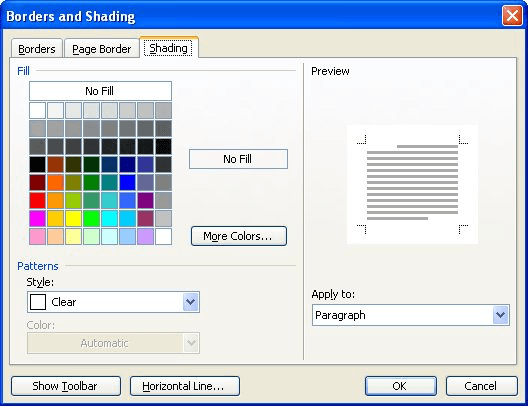

 when you point to the area of your document that contains text.
when you point to the area of your document that contains text. and select Stop Highlighting, or press Esc.
and select Stop Highlighting, or press Esc. when you point to your document.
when you point to your document.